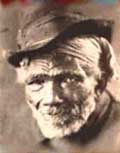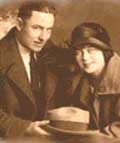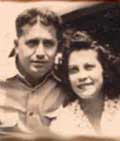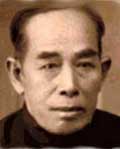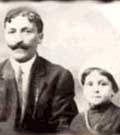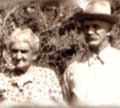

 |
|

Jane Adams and D. Gorton
Our project aims to understand how “white” people in the lower Mississippi Delta negotiated and understood the transformation of their society that occurred during the social revolutions following World War II: the civil rights movement which abolished legal segregation; the mechanization of agriculture and the consolidation of commerce; and the vastly enlarged sphere of government. These transformations fundamentally reworked agricultural and small town economies and societies. With the legal foundation of white supremacy eliminated, African Americans moved, for the first time since Reconstruction, into positions of political power in many regions, while the white farming and business classes lost much of their economic hegemony to government agencies and outside capital. The countryside has been largely depopulated, the smaller towns emptied out, the landscape stripped of most relics of the past.
In this reconstituted public arena, “whiteness” lost much of its practical usefulness and its power to conjure powerful solidarities. With the unifying force of white racial identity attenuated, those who are not African Americans have begun to appear distinguished by ethnicity, religion, and class. Whether explicitly deployed in the public arena or not, people’s complex personal histories – their ethnic heritage, class background, religious affiliation, gender, sexual orientation -- have provided significantly different tools for negotiating the rapidly shifting social terrain.1
The contemporary dynamics of the South cannot be understood through a bi-racial lens: its social diversity must be comprehended. Contemporary identities, far more protean and malleable than those instituted through the rigid classification of “white” and “black,” appear more through practices of daily life and through tellings of family histories than through explicit ideological claims or publicly available films and other visual representations. We will, therefore, use the tools of ethnographic research and of documentary photography/ visual anthropology to explore people’s verbal and visual narratives of the past and the ways they have lived their lives – their vocations, their marriages, their religious affiliation, their political activities, their associates.2 We focus particularly on the Arkansas-Mississippi portion of the lower Mississippi Delta, a region that remains majority African American and largely rural.
Background
The people alive today lived through, or grew up in the shadow of, the fundamental transformation of the region: the elimination of legal racial segregation and the displacement of the agricultural and small business economies by mass manufacturing and distribution systems and government services.3 Whites have been displaced from legal and, in many locales, political ascendancy. They remain important in the region’s economy and social orderings. Young adults, those born in the 1970s, are the first generation to grow up inside of the new order; their parents, born around World War II, were the last to come of age under the old.
The parents of today’s young adults grew up in an order in which they were members of a clearly defined ruling or subordinate caste. Except for Chinese who, despite their legal classification as non-white, gained access to many white institutions during and soon after World War II, everyone who was not African American was legally classified as white. This identity, though sometimes troubled by ethnic and religious distinctions, prescribed an elaborated set of behaviors and privileges, drew on stereotypic representations of blacks and whites, and defined codes of masculinity and femininity, particularly in regard to relations across the color line.4 Our research focuses on the people who were classified on the white side of the color line.
With the mantle of legal identity lifted, it is now possible to view this “white community” as diverse, embodying varied modes of negotiating their roles in the new order. This knowledge is carried largely inchoate in people’s daily lives; it has been subsumed in public discourse under the received experience of legal white supremacy, rendering the experiences of large numbers of whites invisible (see, for example, Cynthia Duncan’s characterization of “Dahlia County”, Mississippi in her 1999 book, Worlds Apart: Why Poverty Persists in Rural America (Yale University Press) and press characterizations of the 2001 white campaign to maintain the Confederate battle flag design as part of the Mississippi flag).
The Lower Mississippi Delta
In the South, between the 1890s and the 1960s law cemented white supremacy, legitimating a system of privilege that shaped everyone’s identities, regardless of their individual backgrounds and commitments. Drawing on this history and its overwhelming black majorities, the Yazoo-Mississippi Delta came to stand in the American imagination as what James Cobb once termed “the most southern place on earth." Yet, as Cobb and others document, the Delta region of Mississippi and the Lower Mississippi Delta in general – a region reaching from southernmost Illinois to the Gulf of Mexico – was thinly settled when the Civil War ravaged the region’s economy and freed the slaves. Its plantations arose as industrial enterprises which, like their northern counterparts, competed for and recruited wage labor – land-hungry old stock blacks and whites and immigrants from Europe . Commerce developed as enterprising immigrants – Jews, Chinese, Syrians, Italians--, as well as Yankees and some old stock southern whites drew on relations with landsmen and kin as much as America’s developing financial and commercial systems, bringing capital, goods, and services to the region.7
Following World War II powerful movements resisting and calling for extension of civil rights to African Americans developed in the South in general, and in the Yazoo-Mississippi Delta in particular. Some attention has been paid to the “inside agitators” , and Marsh reveals the widely divergent ways some of the whites drew on their faith to act against and for the movement to eliminate white supremacy.8 After the crisis of the Little Rock, Arkansas, school integration, the process of desegregation was somewhat more peaceful in Arkansas. In most parts of the Delta region, the whites were dwarfed in numbers by blacks, yet although they operated within the political economy and racial coding as "white," they were diverse and in many ways deeply divided. Those divisions remain, shaping a region that remains unique in American culture in ways that have been infrequently observed and even less adequately analyzed. The ways that whites negotiated this transformation remains opaque, both in popular representations and in scholarship.
This web site will publish our research. We expect it to grow and change continuously. We have one area, or "essay", based on a classroom video we made from our first field season, "Race: Mississippi, Summer 2000". "Out of Africa," a video about African missionaries to white congregations in the Delta is posted here, with an accompanying site. A third video, "Allen's Choice," will be posted. Another link is to our research on the Farm Security Administration.
While doing our research we came across the photographs of J.C. Coovert. We have dedicated a site to his important work.
Other "essays" presents D. Gorton's photographs of "The White South: 1969-1970" and photographs of "Places of Worship in the Delta." Published articles from our research are also posted here.
© D. Gorton and Jane Adams 2007
Arbor District Homes
